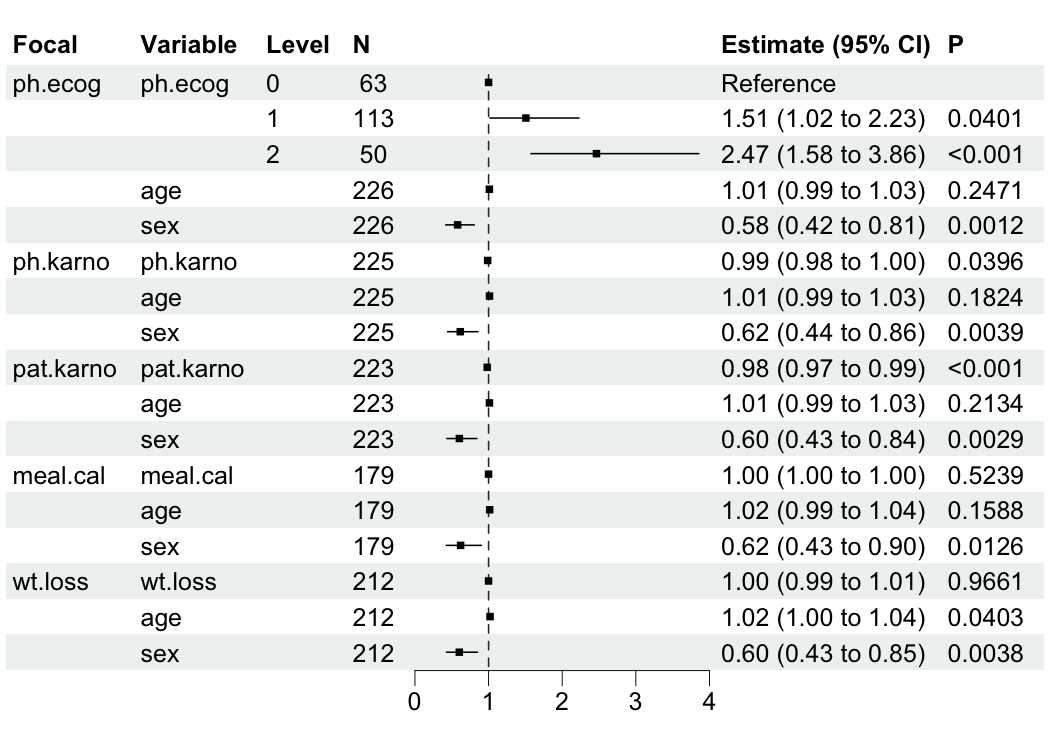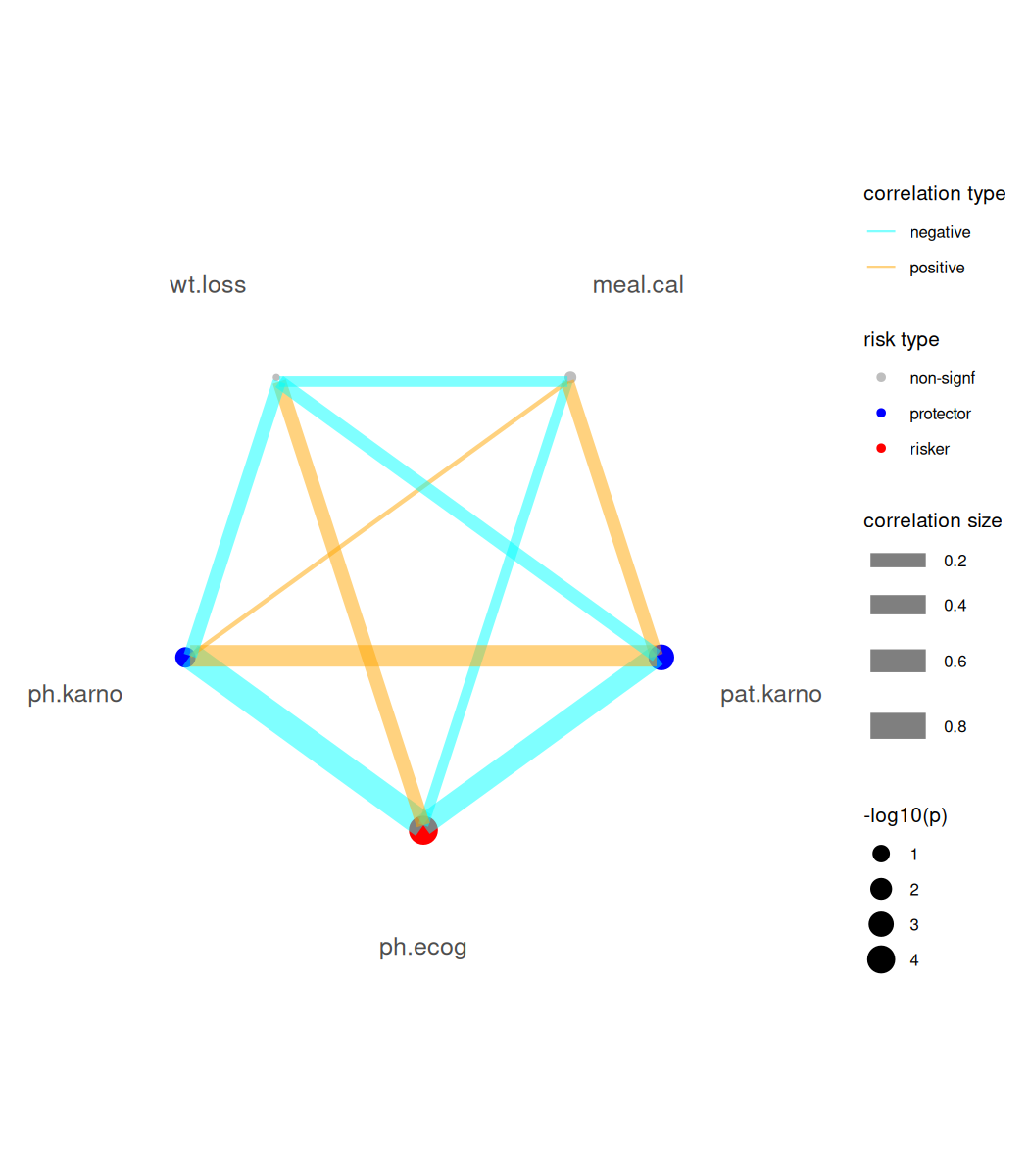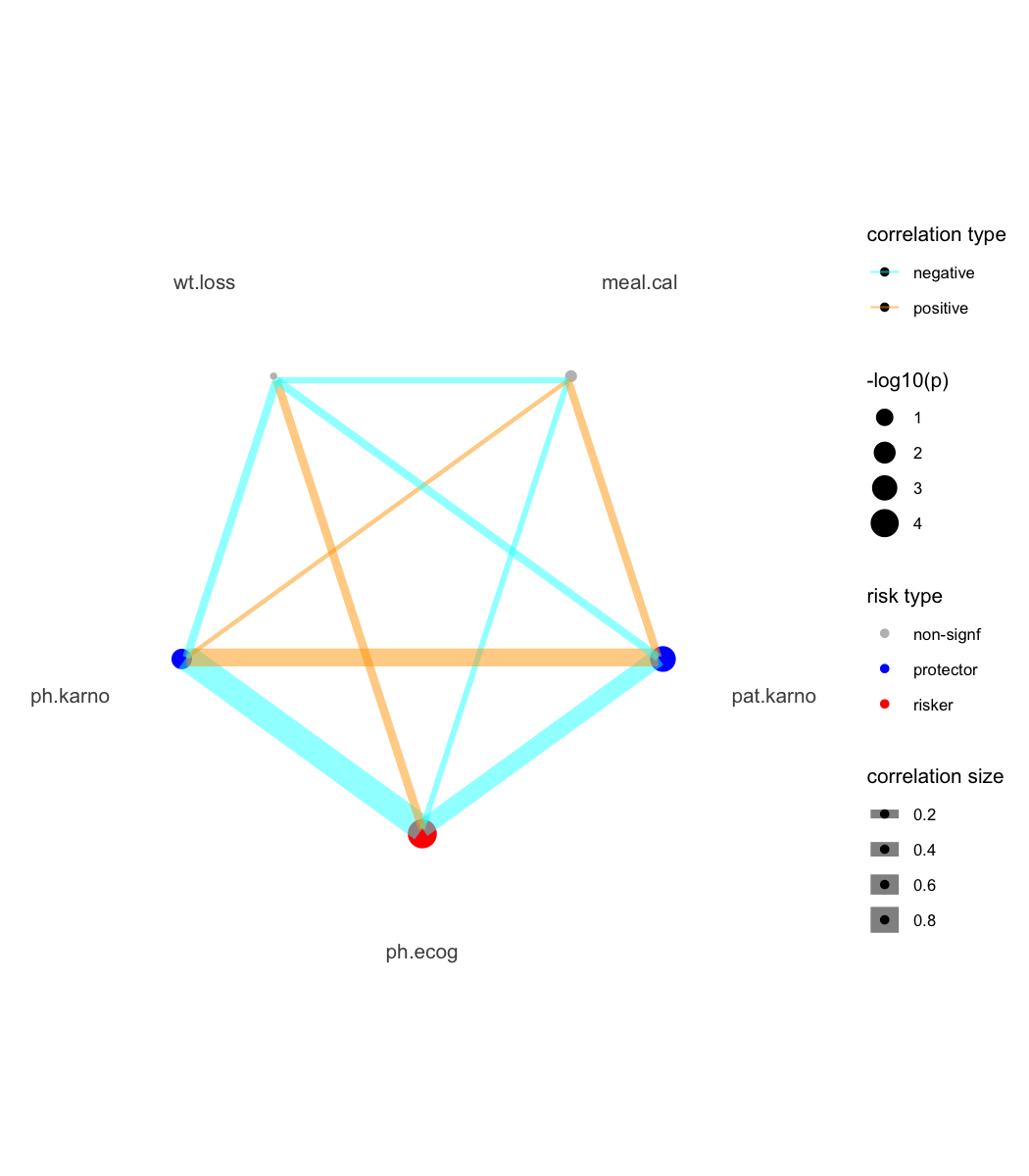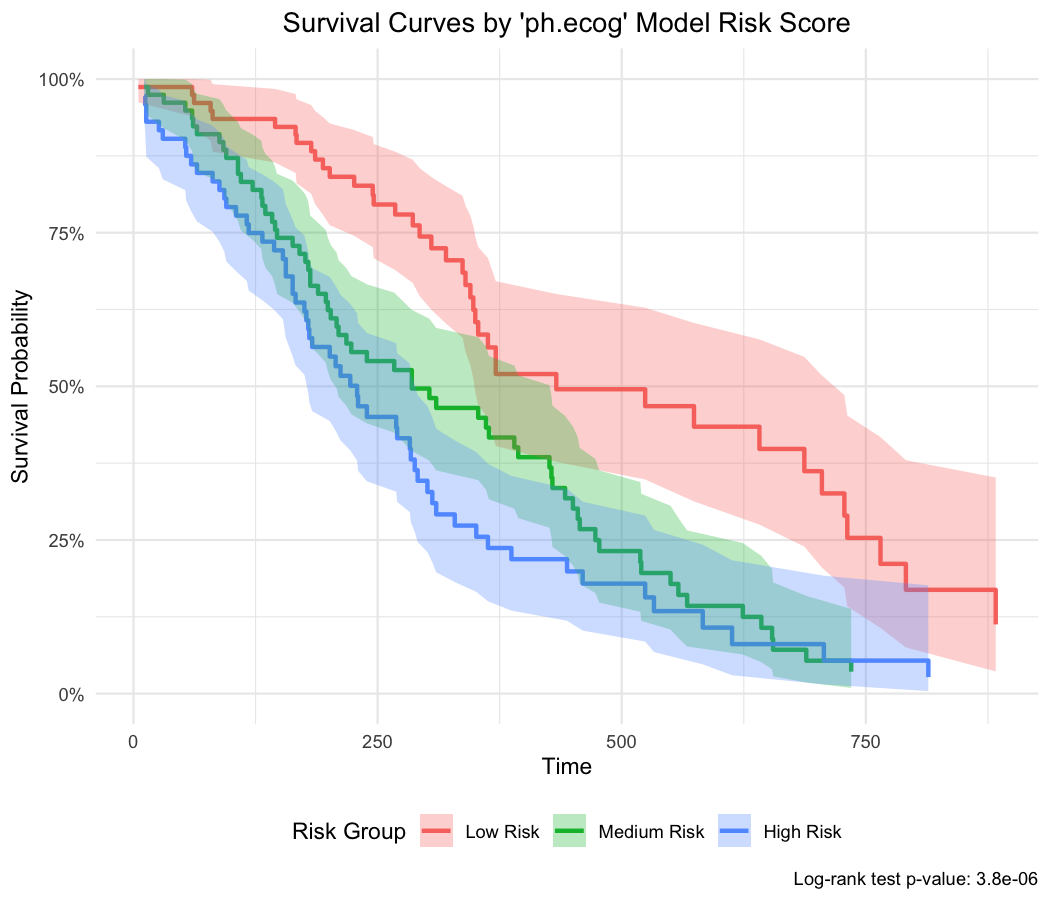
The hardware and bandwidth for this mirror is donated by dogado GmbH, the Webhosting and Full Service-Cloud Provider. Check out our Wordpress Tutorial.
If you wish to report a bug, or if you are interested in having us mirror your free-software or open-source project, please feel free to contact us at mirror[@]dogado.de.

The bregr package revolutionizes batch regression modeling in R, enabling you to run hundreds of models simultaneously with a clean, intuitive workflow. Designed for both univariate and multivariate analyses, it delivers tidy-formatted results and publication-ready visualizations, transforming cumbersome statistical workflows into efficient pipelines.
tidyverse for seamless downstream analysis.|>).Batch regression streamlines analyses where:
A simplified overview of batch regression modeling is given below for illustration:
You can install the stable version of bregr from CRAN with:
install.packages("bregr")Alternatively, install the development version from r-universe with:
install.packages('bregr', repos = c('https://wanglabcsu.r-universe.dev', 'https://cloud.r-project.org'))or from GitHub with:
#install.packages("remotes")
remotes::install_github("WangLabCSU/bregr")Load package(s):
library(bregr)
#> Welcome to 'bregr' package!
#> =======================================================================
#> You are using bregr version 1.1.0.9000
#>
#> Project home : https://github.com/WangLabCSU/bregr
#> Documentation: https://wanglabcsu.github.io/bregr/
#> Cite as : arXiv:2110.14232
#> =======================================================================
#> Load data:
lung <- survival::lung |>
dplyr::filter(ph.ecog != 3)
lung$ph.ecog <- factor(lung$ph.ecog)bregr is designed and implemented following Tidy design principles and Tidyverse style guide, making it intuitive and user-friendly.
Define and construct batch models:
mds <- breg(lung) |> # Init breg object
br_set_y(c("time", "status")) |> # Survival outcomes
br_set_x(colnames(lung)[6:10]) |> # Focal predictors
br_set_x2(c("age", "sex")) |> # Controls
br_set_model("coxph") |> # Cox Proportional Hazards
br_run() # Execute models
#> exponentiate estimates of model(s) constructed from coxph method at defaultmds <- br_pipeline(
lung,
y = c("time", "status"),
x = colnames(lung)[6:10],
x2 = c("age", "sex"),
method = "coxph"
)Run in parallel:
mds_p <- br_pipeline(
lung,
y = c("time", "status"),
x = colnames(lung)[6:10],
x2 = c("age", "sex"),
method = "coxph",
n_workers = 3
)
#> exponentiate estimates of model(s) constructed from coxph method at default
#> ■■■■■■■ 20% | ETA: 46s
#> all.equal(mds, mds_p)
#> [1] TRUETwo global options have been introduced to control whether models are
saved as local files (bregr.save_model, default is
FALSE) and where they should be saved
(bregr.path, default uses a temporary path).
Use br_get_*() function family to access attributes and
data of result breg object.
br_get_models(mds) # Raw model objects
#> $ph.ecog
#> Call:
#> survival::coxph(formula = survival::Surv(time, status) ~ ph.ecog +
#> age + sex, data = data)
#>
#> coef exp(coef) se(coef) z p
#> ph.ecog1 0.409836 1.506571 0.199606 2.053 0.04005
#> ph.ecog2 0.902321 2.465318 0.228092 3.956 7.62e-05
#> age 0.010777 1.010836 0.009312 1.157 0.24713
#> sex -0.545631 0.579476 0.168229 -3.243 0.00118
#>
#> Likelihood ratio test=28.94 on 4 df, p=8.052e-06
#> n= 226, number of events= 163
#>
#> $ph.karno
#> Call:
#> survival::coxph(formula = survival::Surv(time, status) ~ ph.karno +
#> age + sex, data = data)
#>
#> coef exp(coef) se(coef) z p
#> ph.karno -0.012238 0.987837 0.005946 -2.058 0.03957
#> age 0.012615 1.012695 0.009462 1.333 0.18244
#> sex -0.485116 0.615626 0.168170 -2.885 0.00392
#>
#> Likelihood ratio test=17.21 on 3 df, p=0.0006413
#> n= 225, number of events= 162
#> (1 observation deleted due to missingness)
#>
#> $pat.karno
#> Call:
#> survival::coxph(formula = survival::Surv(time, status) ~ pat.karno +
#> age + sex, data = data)
#>
#> coef exp(coef) se(coef) z p
#> pat.karno -0.018736 0.981439 0.005676 -3.301 0.000964
#> age 0.011672 1.011740 0.009381 1.244 0.213436
#> sex -0.505205 0.603382 0.169452 -2.981 0.002869
#>
#> Likelihood ratio test=23.07 on 3 df, p=3.896e-05
#> n= 223, number of events= 160
#> (3 observations deleted due to missingness)
#>
#> $meal.cal
#> Call:
#> survival::coxph(formula = survival::Surv(time, status) ~ meal.cal +
#> age + sex, data = data)
#>
#> coef exp(coef) se(coef) z p
#> meal.cal -0.0001535 0.9998465 0.0002409 -0.637 0.5239
#> age 0.0149375 1.0150496 0.0106016 1.409 0.1588
#> sex -0.4775830 0.6202808 0.1914559 -2.494 0.0126
#>
#> Likelihood ratio test=10.1 on 3 df, p=0.0177
#> n= 179, number of events= 132
#> (47 observations deleted due to missingness)
#>
#> $wt.loss
#> Call:
#> survival::coxph(formula = survival::Surv(time, status) ~ wt.loss +
#> age + sex, data = data)
#>
#> coef exp(coef) se(coef) z p
#> wt.loss -0.0002676 0.9997324 0.0062908 -0.043 0.96607
#> age 0.0199314 1.0201314 0.0097178 2.051 0.04027
#> sex -0.5067253 0.6024652 0.1748697 -2.898 0.00376
#>
#> Likelihood ratio test=13.87 on 3 df, p=0.003086
#> n= 212, number of events= 150
#> (14 observations deleted due to missingness)
br_get_results(mds) # Comprehensive estimates
#> # A tibble: 17 × 21
#> Focal_variable term variable var_label var_class var_type var_nlevels
#> <chr> <chr> <chr> <chr> <chr> <chr> <int>
#> 1 ph.ecog ph.ecog0 ph.ecog ph.ecog factor categoric… 3
#> 2 ph.ecog ph.ecog1 ph.ecog ph.ecog factor categoric… 3
#> 3 ph.ecog ph.ecog2 ph.ecog ph.ecog factor categoric… 3
#> 4 ph.ecog age age age numeric continuous NA
#> 5 ph.ecog sex sex sex numeric continuous NA
#> 6 ph.karno ph.karno ph.karno ph.karno numeric continuous NA
#> 7 ph.karno age age age numeric continuous NA
#> 8 ph.karno sex sex sex numeric continuous NA
#> 9 pat.karno pat.karno pat.karno pat.karno numeric continuous NA
#> 10 pat.karno age age age numeric continuous NA
#> 11 pat.karno sex sex sex numeric continuous NA
#> 12 meal.cal meal.cal meal.cal meal.cal numeric continuous NA
#> 13 meal.cal age age age numeric continuous NA
#> 14 meal.cal sex sex sex numeric continuous NA
#> 15 wt.loss wt.loss wt.loss wt.loss numeric continuous NA
#> 16 wt.loss age age age numeric continuous NA
#> 17 wt.loss sex sex sex numeric continuous NA
#> # ℹ 14 more variables: contrasts <chr>, contrasts_type <chr>,
#> # reference_row <lgl>, label <chr>, n_obs <dbl>, n_ind <dbl>, n_event <dbl>,
#> # exposure <dbl>, estimate <dbl>, std.error <dbl>, statistic <dbl>,
#> # p.value <dbl>, conf.low <dbl>, conf.high <dbl>
br_get_results(mds, tidy = TRUE) # Tidy-formatted coefficients
#> # A tibble: 16 × 8
#> Focal_variable term estimate std.error statistic p.value conf.low conf.high
#> <chr> <chr> <dbl> <dbl> <dbl> <dbl> <dbl> <dbl>
#> 1 ph.ecog ph.ec… 1.51 0.200 2.05 4.01e-2 1.02 2.23
#> 2 ph.ecog ph.ec… 2.47 0.228 3.96 7.62e-5 1.58 3.86
#> 3 ph.ecog age 1.01 0.00931 1.16 2.47e-1 0.993 1.03
#> 4 ph.ecog sex 0.579 0.168 -3.24 1.18e-3 0.417 0.806
#> 5 ph.karno ph.ka… 0.988 0.00595 -2.06 3.96e-2 0.976 0.999
#> 6 ph.karno age 1.01 0.00946 1.33 1.82e-1 0.994 1.03
#> 7 ph.karno sex 0.616 0.168 -2.88 3.92e-3 0.443 0.856
#> 8 pat.karno pat.k… 0.981 0.00568 -3.30 9.64e-4 0.971 0.992
#> 9 pat.karno age 1.01 0.00938 1.24 2.13e-1 0.993 1.03
#> 10 pat.karno sex 0.603 0.169 -2.98 2.87e-3 0.433 0.841
#> 11 meal.cal meal.… 1.000 0.000241 -0.637 5.24e-1 0.999 1.00
#> 12 meal.cal age 1.02 0.0106 1.41 1.59e-1 0.994 1.04
#> 13 meal.cal sex 0.620 0.191 -2.49 1.26e-2 0.426 0.903
#> 14 wt.loss wt.lo… 1.000 0.00629 -0.0425 9.66e-1 0.987 1.01
#> 15 wt.loss age 1.02 0.00972 2.05 4.03e-2 1.00 1.04
#> 16 wt.loss sex 0.602 0.175 -2.90 3.76e-3 0.428 0.849bregr mainly provides br_show_forest() for plotting data
table of modeling results.
br_show_forest(mds)
We can tune the plot to only keep focal variables and adjust the limits of x axis.
br_show_forest(
mds,
rm_controls = TRUE, # Focus on focal predictors
xlim = c(0, 3), # Custom axis scaling
# Use x_trans = "log" to transform the axis
# Use log_first = TRUE to transform both
# the axis and estimate table
drop = 1 # Remove redundant columns
)
We also provide some interfaces from other packages for plotting
constructed model(s), e.g., br_show_forest_ggstats(),
br_show_forest_ggstatsplot(),
br_show_fitted_line(), and
br_show_fitted_line_2d().
For Cox-PH modeling results (focal variables must be continuous type), we provide a risk network plotting function.
mds2 <- br_pipeline(
survival::lung,
y = c("time", "status"),
x = colnames(survival::lung)[6:10],
x2 = c("age", "sex"),
method = "coxph"
)
#> exponentiate estimates of model(s) constructed from coxph method at defaultbr_show_risk_network(mds2)
#> please note only continuous focal terms analyzed and visualized
For Cox-PH models, you can generate model predictions (risk scores) and create survival curves grouped by these scores:
# Generate model predictions
scores <- br_predict(mds2, idx = "ph.ecog")
#> `type` is not specified, use lp for the model
#> Warning: some predictions are NA, consider checking your data for missing
#> values
head(scores)
#> 1 2 3 4 5 6
#> 0.3692998 -0.1608293 -0.2936304 0.1811648 -0.2493634 0.3692998# Create survival curves based on model scores
br_show_survival_curves(
mds2,
idx = "ph.ecog",
n_groups = 3,
title = "Survival Curves by 'ph.ecog' Model Risk Score"
)
#> Warning: some predictions are NA, consider checking your data for missing
#> values
Show tidy table result as pretty table:
br_show_table(mds)
#> Focal_variable term estimate std.error statistic p.value conf.int
#> 1 ph.ecog ph.ecog1 1.51 0.20 2.05 0.040 [1.02, 2.23]
#> 2 ph.ecog ph.ecog2 2.47 0.23 3.96 < .001 [1.58, 3.86]
#> 3 ph.ecog age 1.01 9.31e-03 1.16 0.247 [0.99, 1.03]
#> 4 ph.ecog sex 0.58 0.17 -3.24 0.001 [0.42, 0.81]
#> 5 ph.karno ph.karno 0.99 5.95e-03 -2.06 0.040 [0.98, 1.00]
#> 6 ph.karno age 1.01 9.46e-03 1.33 0.182 [0.99, 1.03]
#> 7 ph.karno sex 0.62 0.17 -2.88 0.004 [0.44, 0.86]
#> 8 pat.karno pat.karno 0.98 5.68e-03 -3.30 < .001 [0.97, 0.99]
#> 9 pat.karno age 1.01 9.38e-03 1.24 0.213 [0.99, 1.03]
#> 10 pat.karno sex 0.60 0.17 -2.98 0.003 [0.43, 0.84]
#> 11 meal.cal meal.cal 1.00 2.41e-04 -0.64 0.524 [1.00, 1.00]
#> 12 meal.cal age 1.02 0.01 1.41 0.159 [0.99, 1.04]
#> 13 meal.cal sex 0.62 0.19 -2.49 0.013 [0.43, 0.90]
#> 14 wt.loss wt.loss 1.00 6.29e-03 -0.04 0.966 [0.99, 1.01]
#> 15 wt.loss age 1.02 9.72e-03 2.05 0.040 [1.00, 1.04]
#> 16 wt.loss sex 0.60 0.17 -2.90 0.004 [0.43, 0.85]As markdown table:
br_show_table(mds, export = TRUE)
#> Focal_variable | term | estimate | std.error | statistic | p.value | conf.int
#> --------------------------------------------------------------------------------------
#> ph.ecog | ph.ecog1 | 1.51 | 0.20 | 2.05 | 0.040 | [1.02, 2.23]
#> ph.ecog | ph.ecog2 | 2.47 | 0.23 | 3.96 | < .001 | [1.58, 3.86]
#> ph.ecog | age | 1.01 | 9.31e-03 | 1.16 | 0.247 | [0.99, 1.03]
#> ph.ecog | sex | 0.58 | 0.17 | -3.24 | 0.001 | [0.42, 0.81]
#> ph.karno | ph.karno | 0.99 | 5.95e-03 | -2.06 | 0.040 | [0.98, 1.00]
#> ph.karno | age | 1.01 | 9.46e-03 | 1.33 | 0.182 | [0.99, 1.03]
#> ph.karno | sex | 0.62 | 0.17 | -2.88 | 0.004 | [0.44, 0.86]
#> pat.karno | pat.karno | 0.98 | 5.68e-03 | -3.30 | < .001 | [0.97, 0.99]
#> pat.karno | age | 1.01 | 9.38e-03 | 1.24 | 0.213 | [0.99, 1.03]
#> pat.karno | sex | 0.60 | 0.17 | -2.98 | 0.003 | [0.43, 0.84]
#> meal.cal | meal.cal | 1.00 | 2.41e-04 | -0.64 | 0.524 | [1.00, 1.00]
#> meal.cal | age | 1.02 | 0.01 | 1.41 | 0.159 | [0.99, 1.04]
#> meal.cal | sex | 0.62 | 0.19 | -2.49 | 0.013 | [0.43, 0.90]
#> wt.loss | wt.loss | 1.00 | 6.29e-03 | -0.04 | 0.966 | [0.99, 1.01]
#> wt.loss | age | 1.02 | 9.72e-03 | 2.05 | 0.040 | [1.00, 1.04]
#> wt.loss | sex | 0.60 | 0.17 | -2.90 | 0.004 | [0.43, 0.85]As HTML table:
br_show_table(mds, export = TRUE, args_table_export = list(format = "html"))All functions are documented in the package reference, with full documentation available on the package site.
covr::package_coverage()
#> bregr Coverage: 70.35%
#> R/98-utils.R: 58.17%
#> R/07-diagnostics.R: 63.41%
#> R/06-avail.R: 66.07%
#> R/04-show.R: 66.80%
#> R/04-show-nomogram-helpers.R: 68.59%
#> R/03-accessors.R: 75.31%
#> R/02-pipeline.R: 77.36%
#> R/01-class.R: 90.70%
#> R/99-zzz.R: 90.91%
#> R/05-polar.R: 92.37%(GPL-3) Copyright (c) 2025 Shixiang Wang & WangLabCSU team
These binaries (installable software) and packages are in development.
They may not be fully stable and should be used with caution. We make no claims about them.
Health stats visible at Monitor.